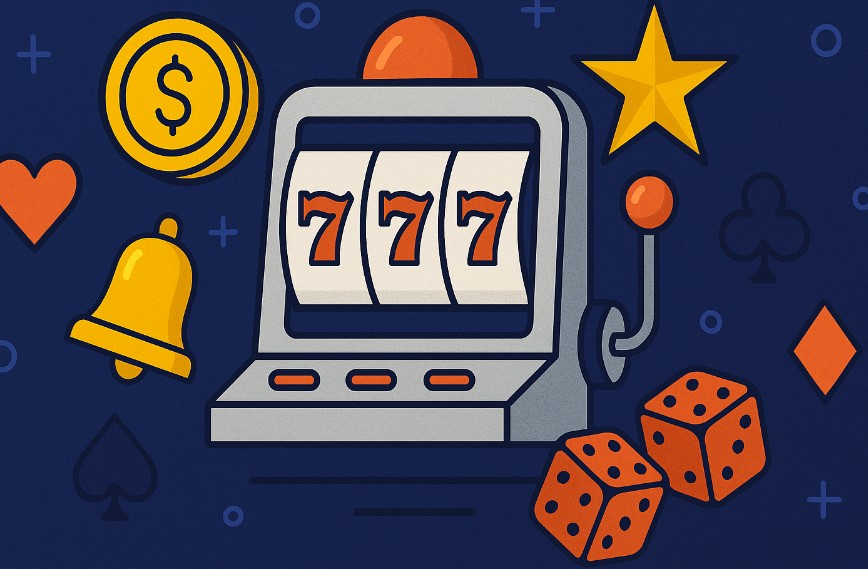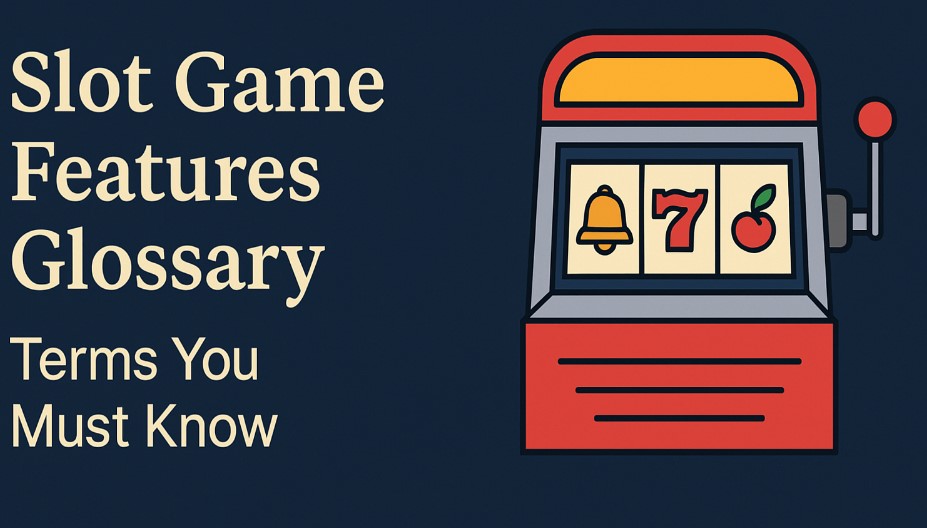If you’ve ever sat in front of a slot machine and thought, “Okay, what on earth just happened?”—you’re not alone. Slots speak their own language. Between reels, scatters, paylines, and RTP percentages, it can feel like reading a manual written in hieroglyphics. The funny thing is, once you start learning the lingo, those flashing lights and random sounds make a whole lot more sense. Let’s break it down like we’re chatting at the casino bar, beer in hand, waiting for our turn on the machines.
Must-Know Slot Game Features
Understanding Reels, Rows, and Symbols
Every slot starts with reels. Think of them as the vertical cylinders that spin around. Old-school fruit machines stuck with three reels, but modern video slots are like, “why stop there?” Five is common, and some stretch to seven or even more. Rows are simply the horizontal spots where the symbols land. Put them together, and you’ve got a grid.
Symbols are the real eye candy. On a pub fruit machine, you’ll see cherries, lemons, and BAR signs. Online, it can be anything: ancient Egyptian gods, shiny gems, or even a grinning joker. I remember the first time I played Book of Dead—the explorer symbol popped up and I thought, “Huh, Indiana Jones’ cousin just got me paid.”
What Is a Payline?
A payline is where the magic happens. Classic “one-armed bandits” had just a single line across the middle. Simple, easy, no confusion. These days? Slots love to brag: 50 paylines, 243 ways, or even “Megaways” with thousands of possible combinations.
I once showed a friend a Megaways slot and he asked if I’d accidentally opened Excel. All those paylines can look like spreadsheets, but once you realize it just means “more chances to connect symbols,” it feels less intimidating.
Progressive vs. Standard Jackpots
Here’s the difference: a standard jackpot pays a fixed prize, while a progressive jackpot grows every time someone, anywhere, plays that game. That’s why Mega Moolah’s jackpots sometimes balloon into the millions.
A buddy of mine in Vegas once pointed at a Megabucks machine and said, “That jackpot is higher than my student loans.” He wasn’t wrong. Of course, the odds are long, but the dream keeps people pressing spin.
Common Slot Machine Terms Explained
Volatility and Hit Frequency
Volatility is casino-speak for risk and reward. High volatility means fewer wins but bigger payouts when they come. Low volatility? Lots of small wins that keep you in the game.
Think of it like fishing. A high-volatility slot is deep-sea fishing—you might wait hours, but when you catch something, it’s massive. Low-volatility is like casting a line in a pond—you’ll pull up plenty of little fish, but don’t expect a marlin. Personally, I play low-volatility games when I just want to zone out for an hour with steady wins.
Hit frequency ties into this. If a game has a 30% hit frequency, you’ll land something about every three spins. That doesn’t mean it’s always good—it could be two cents on a twenty-cent spin—but it keeps the lights flashing and the dopamine flowing.
Return to Player (RTP) & RNG
RTP, or Return to Player, is the percentage of all money wagered that the slot theoretically pays back over time. A solid RTP is around 96%. I say “theoretically” because on any given night, you might get crushed or walk away ahead—it’s about the long-term math.
Behind it all is RNG, the Random Number Generator. It’s basically a digital dice roll happening at lightning speed. Once, a friend swore he could “time the spin” on an online slot to get a bonus round. Spoiler: he couldn’t. RNG laughs at timing tricks—it’s all luck.
Bonus Features and Rounds
Free Spins and Nudge Functions
Free spins are everyone’s favorite. You land the right scatter symbols, and suddenly you’re spinning for free with a chance at real wins. Some games even toss in multipliers during those spins, which is when the real fireworks happen.
Nudges are more old-school. If you’ve played a fruit machine in a UK pub, you’ve probably seen them. Imagine a reel stops just above a winning symbol, and the game lets you “nudge” it down into place. I remember my uncle bragging about nudging a BAR into line back in the day, like he’d cracked some kind of code. Spoiler again: the machine gave him the nudge on purpose.
Sticky and Expanding Symbols
Sticky symbols are exactly what they sound like. Land one, and it stays glued to the reel while the others keep spinning. It’s like the slot saying, “Don’t worry, I’ve got your back for the next few rounds.” Expanding symbols, meanwhile, take up an entire reel. Book of Dead uses this beautifully—suddenly one little symbol balloons into a reel-filling monster payout.
The first time I saw expanding symbols, I literally thought the game glitched. Then I realized I’d just tripled my stake. Happy accidents, right?
Betting & Player Settings
Coin Denominations, Min/Max Bet

Back in the day, people dropped actual coins into slots, and the terminology stuck. Now, “coin denomination” just means the base value per coin. You might bet $0.01 per coin with 20 paylines, so your minimum bet is $0.20. Crank that up with multiple coins per line, and you can be betting $50 a spin before you know it.
I’ve sat next to high rollers in Vegas betting $100 per spin like it’s nothing. Meanwhile, I’m sweating over whether I can afford one more round at twenty cents. Different worlds, same reels.
Autoplay and Quickspin Options
Autoplay is like cruise control for slots. You set the number of spins, maybe add limits for wins and losses, and let it run. Quickspin trims the animations so you don’t have to sit through every reel slowing down dramatically.
One of my friends says autoplay makes him nervous—“What if I miss the big win animation?” Personally, I like it when I’m multitasking, like spinning while making dinner. Just don’t forget you left it running—that’s a fast way to drain your balance.
Slot Game Entities to Know
Popular Machine Types and Providers
Fruit machines (those pub classics with cherries and BARs), video slots, and mobile slots all have their own personality. Mobile slots, in particular, are tailored for vertical play. Nothing like spinning while waiting for your coffee order—don’t judge me, we’ve all done it.
Providers matter too. Microgaming is known for progressive jackpots, NetEnt for their sleek visuals, Playtech for branded games. Recognizing a provider is like knowing a director’s style in movies—you get a hint of what’s coming.
Real-Life Examples of Terms
Take Cleopatra slots in Vegas. Classic paylines, straightforward bonus rounds—easy to follow, fun to play. Compare that to Starburst by NetEnt, where expanding wilds explode across the screen like fireworks. Or the Book of Dead example, with expanding symbols and free spins. Once you connect the terms to the games, the glossary becomes less “school homework” and more “oh yeah, I’ve seen that!”
Quick Reference Tables
| Term | Meaning | Example |
| Payline | Winning path across reels | 243 ways in Thunderstruck II |
| RTP | Theoretical payout percentage | 96% in Starburst |
| Volatility | Risk/reward balance | High in Dead or Alive 2 |
| Sticky Symbol | Symbol stays fixed for multiple spins | Wilds in Jack and the Beanstalk |
| Progressive Jackpot | Prize pool grows with each bet | Mega Moolah |
FAQs About Slot Features and Terms
What does “hit frequency” really mean?
It’s the chance of getting any win on a spin. If a slot has 30% hit frequency, expect a payout roughly once every three spins—though it might just be pocket change.
Are progressive jackpots worth chasing?
Depends on your patience. If you want steady entertainment, stick with fixed jackpots. If you like the dream of turning a $1 spin into millions, progressives are for you.
Do free spins always have multipliers?
Nope. Some games add them automatically, others don’t. Always check the paytable before you get your hopes up.
Why do providers share RTP?
Partly because regulators demand it, partly because players care. A 96% RTP is often used as a selling point.
Can autoplay be dangerous?
Sure. If you’re not paying attention, it can eat through your bankroll fast. Use it if you set limits, or skip it if you like being hands-on.


